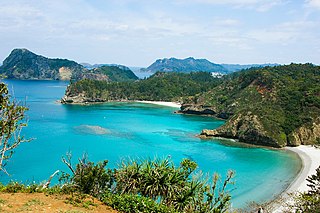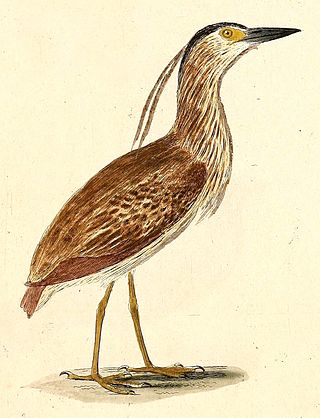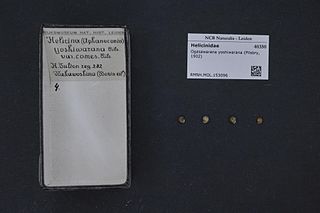
The Bonin Islands, also known as the Ogasawara Islands (小笠原諸島), is a Japanese archipelago of over 30 subtropical and tropical islands located around 1,000 kilometers (620 mi) SSE of Tokyo and 1,600 kilometers (1,000 mi) northwest of Guam. The group as a whole has a total area of 84 square kilometers (32 sq mi) but only two of the islands are permanently inhabited, Chichijima and Hahajima. Together, their population was 2,560 as of 2021. Administratively, Tokyo's Ogasawara Subprefecture also includes the settlements on the Volcano Islands and the Self-Defense Force post on Iwo Jima. The seat of government is Chichijima.

Ogasawara is a village in Ogasawara Subprefecture, Tokyo Metropolis, Japan, that governs the Bonin Islands, Volcano Islands, and three remote islands.

Chichijima (父島) is the largest and most populous island in the Bonin or Ogasawara Islands. Chichijima is about 240 km (150 mi) north of Iwo Jima. 23.5 km2 (9.1 sq mi) in size, the island is home to about 2,120 people (2021). Connected to the mainland only by a day-long ferry that runs a few times a month, the island is nonetheless organized administratively as the seat of Ogasawara Village in the coterminous Ogasawara Subprefecture of the Tokyo Metropolitan Government. Together with the Volcano and Izu Islands, it makes up Japan's Nanpō Islands.

Hahajima, Haha Jima, or Haha-jima is the second-largest island within the Bonin or Ogasawara Islands SSE of the Japanese Home Islands. The steeply-sloped island, which is about 21 km2 (8 sq mi) in area, has a population of 440. It is part of Ogasawara Village in Ogasawara Subprefecture, which is approximately 1,000 km (620 mi) south of Tokyo, Japan.

The Ogasawara subtropical moist forests is a terrestrial ecoregion which encompasses the Ogasawara Archipelago of Japan. The Ogasawara Archipelago lies in the Pacific Ocean south of Honshu, Japan's largest island, and north of the Marianas Islands. The ecoregion includes the Bonin Islands and Volcano Islands chains. The islands are volcanic in origin, and have never been linked to a continent. They are home to distinct plants and animals including many endemic species.

The Bonin wood pigeon was a pigeon endemic to Nakodo-jima and Chichi-jima in the Ogasawara Islands, south of Japan. It is known from four recorded specimens, the first from 1827 and the last from 1889. They averaged a length of 45 cm. This pigeon died out late in the 19th century as a result of deforestation, hunting, and predation by introduced rats and cats.

Grosbeak is a form taxon containing various species of seed-eating passerine birds with large beaks. Although they all belong to the superfamily Passeroidea, these birds are not part of a natural group but rather a polyphyletic assemblage of distantly related songbirds. Some are cardueline finches in the family Fringillidae, while others are cardinals in the family Cardinalidae; one is a member of the weaver family Ploceidae. The word "grosbeak", first applied in the late 1670s, is a partial translation of the French grosbec, where gros means "large" and bec means "beak".

Ogasawara National Park is a national park in the Ogasawara Islands, located approximately one thousand kilometres to the south of Tokyo, Japan. The park was established in 1972 within the municipality of Ogasawara, itself part of Tokyo. In 2011, the Ogasawara Islands were inscribed upon the UNESCO World Heritage List.

The Bonin thrush, also known as Kittlitz's thrush or the Bonin Islands thrush, is an extinct species of Asian thrush. It is sometimes separated as the only species of the genus Cichlopasser. The only place where this bird was found was Chichi-jima in the Ogasawara Islands; it might conceivably have inhabited Anijima and Otōtojima, but this has not been borne out by observations or specimens. The species was only once observed by a naturalist, its discoverer Heinrich von Kittlitz. He encountered the thrush in the coastal woods where it usually kept to the ground; it may have been ground-nesting. The only specimens ever taken are in the Naturalis in Leiden (1), the Naturhistorisches Museum in Vienna (1), the Senckenbergmuseum in Frankfurt (1) and in the Zoological Museum, St. Petersburg (2).

The Bonin white-eye or meguro (メグロ) is a small songbird endemic to the Bonin Islands of Japan. It is the only species in the genus Apalopteron. Its taxonomic affinities were a long-standing mystery and it has been placed with the bulbuls, babblers and more recently with the honeyeaters, during which it was known as the Bonin honeyeater. Since 1995 it is known to be a white-eye in the family Zosteropidae, that is closely related to the golden white-eye of the Marianas Islands.

The Bonin nankeen night heron is an extinct subspecies of the nankeen night heron.
Sturdee's pipistrelle, also known as the Bonin pipistrelle, is an extinct species of bat that was endemic to Japan.

The Bonin flying fox, Bonin fruit bat, or in Japanese, Ogasawara giant bat, is a species of flying fox in the family Pteropodidae. It is endemic to four islands in Ogasawara Islands, Japan. Its natural habitat is subtropical forests. It is threatened by habitat loss.

Mandarina luhuana is an extinct species of air-breathing land snail, a terrestrial pulmonate gastropod mollusk in the family Bradybaenidae. This species is endemic to Chichi-jima and Minami-jima of the Bonin Islands in Japan.

Ogasawarana yoshiwarana is a species of land snail with an operculum, a terrestrial gastropod mollusk in the family Helicinidae, the helicinids.

Panulirus brunneiflagellum is a species of spiny lobster that lives around the Ogasawara Group of southern Japan. Its members were previously included in P. japonicus, although it may be more closely related to P. femoristriga. It has been fished for more than 150 years by Japanese fishermen, who call the species aka-ebi. It differs from related species by the lack of banding along the flagella of the first pair of antennae.

Nathaniel Savory was one of the first American colonists who is said to have settled on the Ogasawara Islands. He eventually became governor, and played an active role in government before and during the colonization by Japan.
The Bonin greenfinch, also known as the Ogasawara greenfinch, is a small passerine bird in the finch family Fringillidae that is endemic to the Ogasawara Islands of Japan, where it is found on the Bonin Islands and Volcano Islands. It was formerly considered a subspecies of the grey-capped greenfinch and some authorities consider it as such, but a 2020 analysis found it likely to represent a distinct species that diverged from C. sinica about 1.06 million years ago, and the International Ornithological Congress now recognizes it as such, making it the eleventh endemic species in Japan. There are fewer than 400 individuals in the population and it is considered critically endangered by the Japanese government, necessitating protection. According to the Yamashina Institute for Ornithology, as of December 2021, the Ogaswara greenfinch is Japan's most endangered bird.

The Bonin Islands are an archipelago of over 30 subtropical and tropical islands, some 1,000 kilometres directly south of Tokyo, Japan and 1,000 miles northwest of Guam.

















